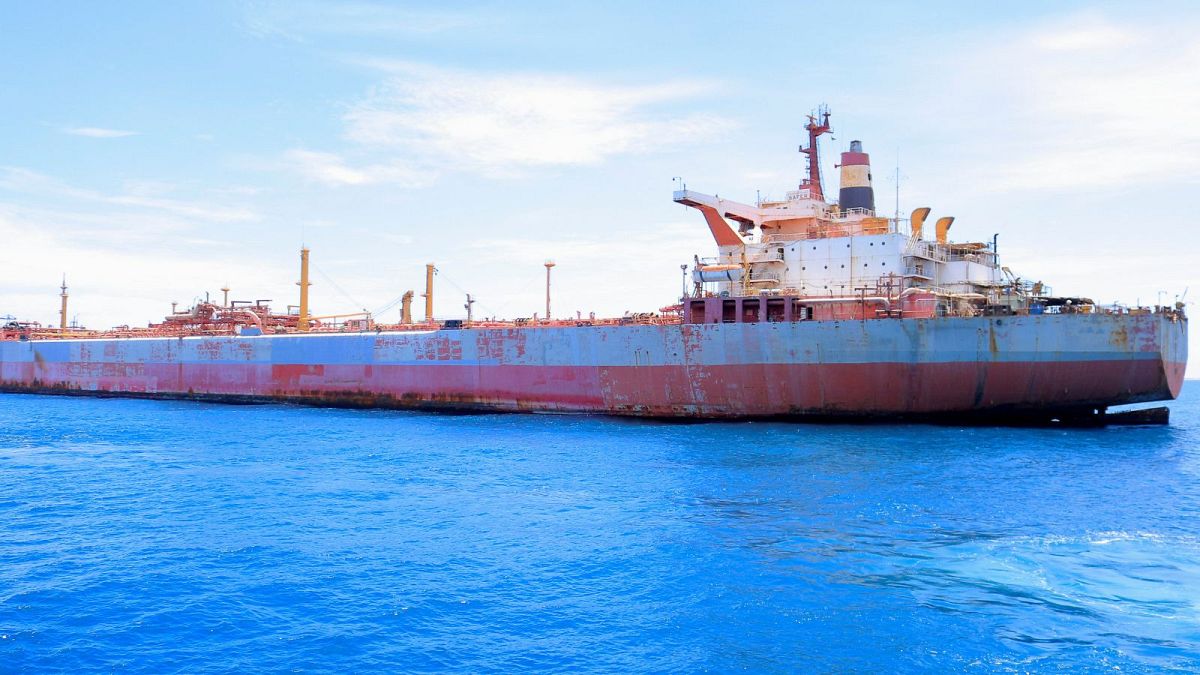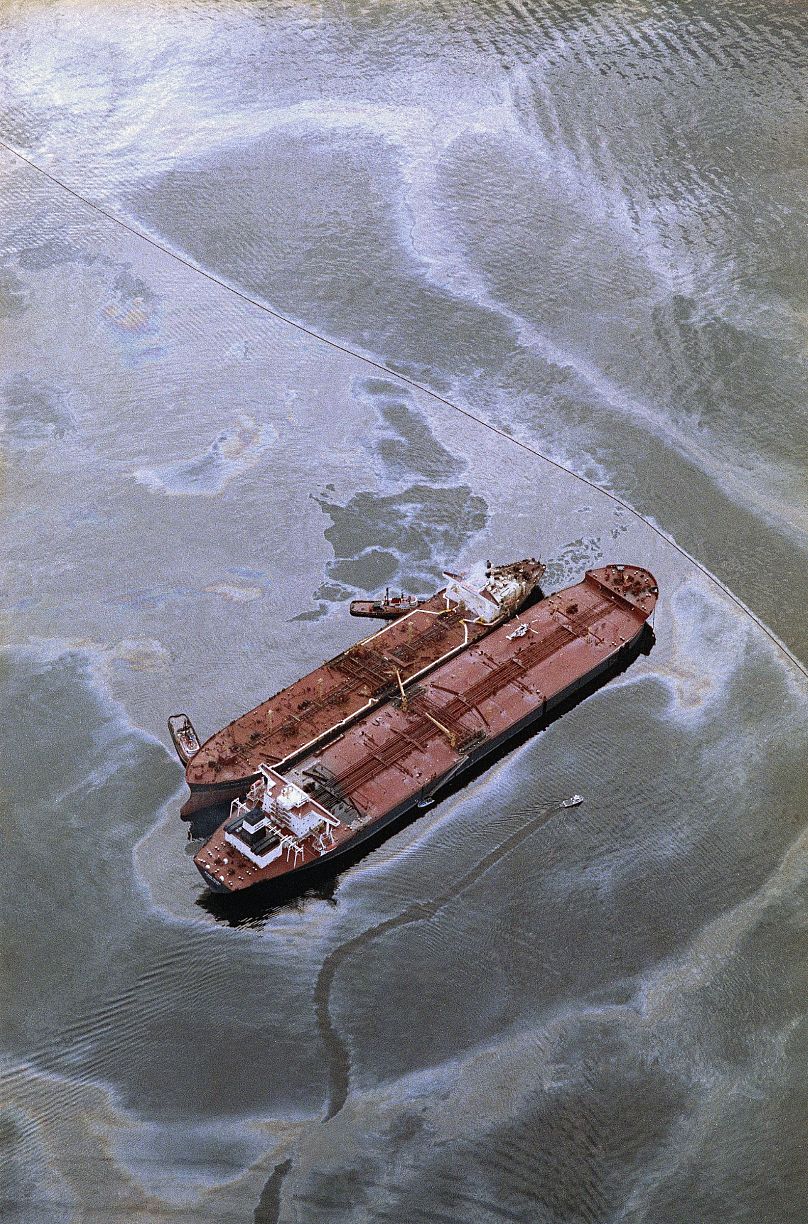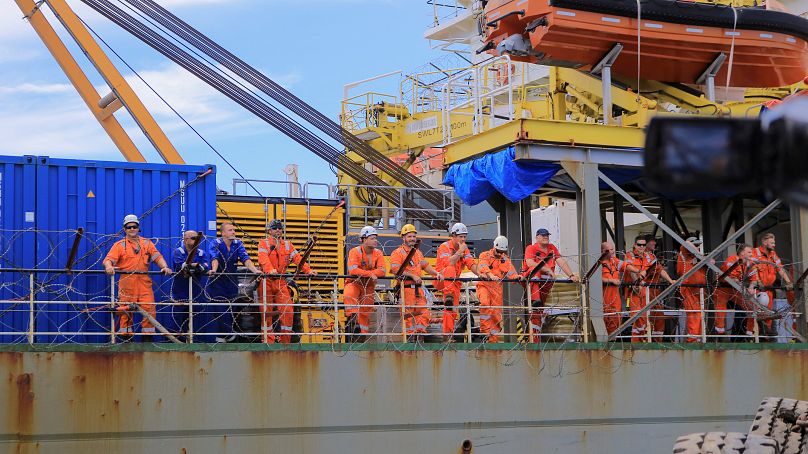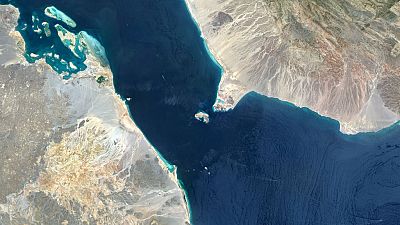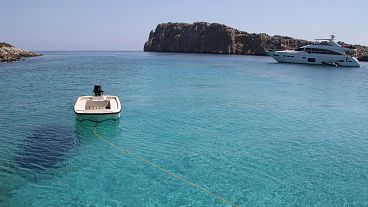Eight years after the Safer super tanker got stranded in the Red Sea, the UN has reached a 'critical milestone' for averting disaster.
An abandoned ship carrying 1.1 million barrels of crude oil could cause an environmental “catastrophe” if it detonates in the Red Sea.
The United Nations is racing to salvage the super tanker stranded off the coast of Yemen, which has been left to rust since 2015 after the country descended into civil war.
It’s taken years for the UN to secure access and the funds needed for the estimated €120 million mission. But in an unprecedented salvage plan, the UN has finally purchased a tanker to remove the fuel from the Safer vessel, stranded 19 miles (31 kilometres) northwest of Hodeida city.
The first technical salvage boat arrived on Tuesday (30 May) near the 360 metre long Safer, marking the start of the four to six week operation to avert a devastating oil spill.
"We're very happy to be on site where we can start the work," David Gressly, the UN coordinator for Yemen, said via video conference from aboard the NDeavor support vessel.
What will happen if the oil tanker explodes?
Experts say the tanker is at risk of breaking apart, exploding or catching fire - and poses a major humanitarian and environmental threat.
The Safer's 1.1 million barrels are four times as much as the oil that spilled in the 1989 Exxon Valdez disaster off Alaska, one of the world's worst ecological catastrophes, according to the UN.
“A major spill would devastate fishing communities on Yemen’s Red Sea coast, likely wiping out 200,000 livelihoods instantly. Whole communities would be exposed to life-threatening toxins. Highly polluted air would affect millions,” a statement from the UN Development Programme (UNDP) warns.
It would also cause the ports of Hodeidah and Saleef to close - cutting off a vital route for foreign aid into the war-torn country, where 17 million people need food assistance. Desalination plants would close too, taking away a water source for millions of people.
“Oil from the Safer could reach the African coast and affect any country on the Red Sea. The environmental impact on coral reefs, life-supporting mangroves, and other marine life would be severe,” the UNDP adds. “Fish stocks would take 25 years to recover.”
What is the plan to salvage the Safer tanker?
To avert these unthinkable crises, a number of countries including the UK, France, Italy, Luxembourg, Malta and Norway have pledged their support for the salvage mission.
The operation has been assigned to a company called SMIT Salvage, which will pump the oil from the Safer to the now UN-owned ship called Nautica, and then tow away the empty tanker.
NDeavor is starting crucial preparatory work today. Experts aboard the support vessel will pump inert gas to remove atmospheric oxygen from the oil chambers of the Safer.
In 2020, internal documents seen by AP news agency showed that seawater has entered Safer’s engine compartment, causing damage to pipes and increasing the risk of sinking. Rust has covered parts of the tanker and the inert gas that prevents the tanks from gathering inflammable gases has leaked out - so replacing it is an important first step.
"With the arrival of the Ndeavour next to the FSO [Safer] in the Red Sea, we truly have reached a critical milestone," said UNDP head Achim Steiner.
"If all goes according to plan, somewhere in late June, early July, we might be in a position to say that that critical phase of the ship-to-ship transfer could be completed.”
After the transfer is complete, the Japan-made oil tanker will eventually be towed away and scrapped.
What happened to Yemen’s Safer oil tanker?
The Safer was built in the 1970s and sold to the Yemeni government in the 1980s to store up to 3 million barrels of oil pumped from fields in Marib, a province in central Yemen.
But the impoverished South Arabian Peninsula nation has been engulfed for years in civil war and no annual maintenance has been carried out on the ship, which has 34 storage tanks, since 2015.
Yemen’s ruinous conflict began in 2014 when the Iran-backed Houthi rebels seized the capital, Sanaa, and much of the country’s north, forcing the internationally recognised government into exile.
The following year, a Saudi-led coalition entered the war to fight the Houthis and try to restore the government to power.
More than 150,000 people have reportedly been killed in the conflict, and more than 23 million left in need of aid.
